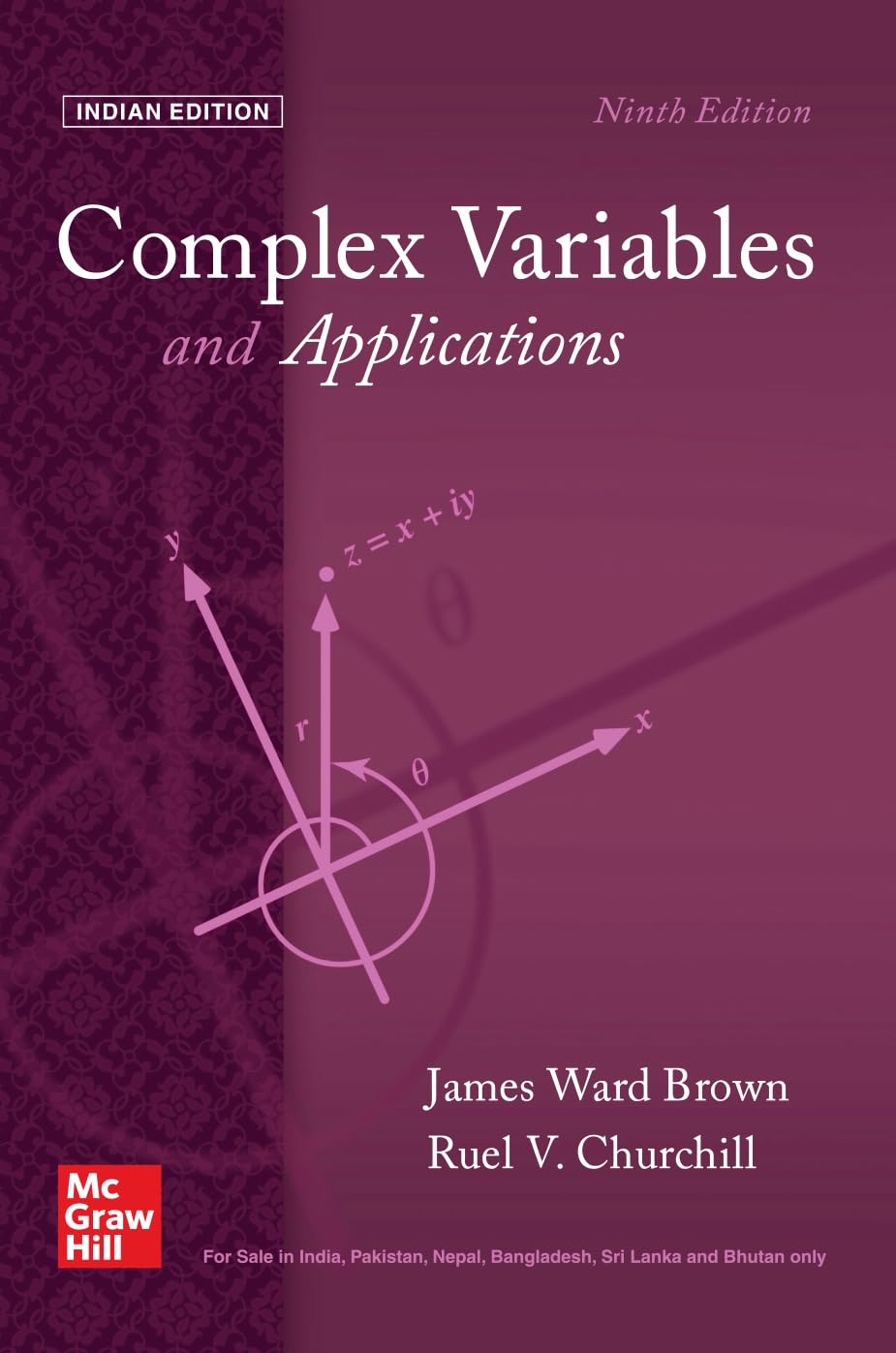Complex Variables and Applications | 9th Edition
Complex Variables and Applications | 9th Edition is backordered and will ship as soon as it is back in stock.
Couldn't load pickup availability
Genuine Products Guarantee
Genuine Products Guarantee
We guarantee 100% genuine products, and if proven otherwise, we will compensate you with 10 times the product's cost.
Delivery and Shipping
Delivery and Shipping
Products are generally ready for dispatch within 1 day and typically reach you in 3 to 5 days.
Book Details
-
Author: Brown, James Ward
-
Publisher: McGraw-Hill Education
-
Edition: Ninth
-
Binding: Paperback
-
Number of Pages: 480
-
Release Date: 01-10-2021
-
ISBN: 9789354600364
-
Package Dimensions: 8.8 x 6.0 x 1.0 inches
-
Languages: English
About The Book
"Complex Variables and Applications" by James Ward Brown, in its Ninth Edition, remains a definitive textbook on the theory and application of functions of a complex variable. Continuing to be a popular choice for introductory courses, this edition preserves the structure and content of previous versions while incorporating valuable updates to enhance clarity and accessibility.
The text focuses on the parts of complex analysis that are most relevant to practical applications, particularly residues and conformal mapping. To cater to students with varying levels of background in calculus, footnotes are included to direct readers to other resources that provide in-depth proofs and discussions of advanced calculus concepts.
Key improvements in this edition include a complete rewrite of the extended form of the Cauchy integral formula for derivatives, with a particular focus on its immediate consequences. Additional enhancements include more detailed explanations of mathematical induction, clearer rules for using complex exponents, a deeper discussion on residues at infinity, and improved expositions of real improper integrals and their Cauchy principal values.
For a more focused presentation of key concepts, topics have been separated into individual sections. For example, the treatment of upper bounds for the moduli of contour integrals is now confined to a dedicated section, and a separate section is introduced for the definition of isolated singular points. These refinements ensure a more structured and accessible learning experience for students exploring the intricacies of complex variables.





